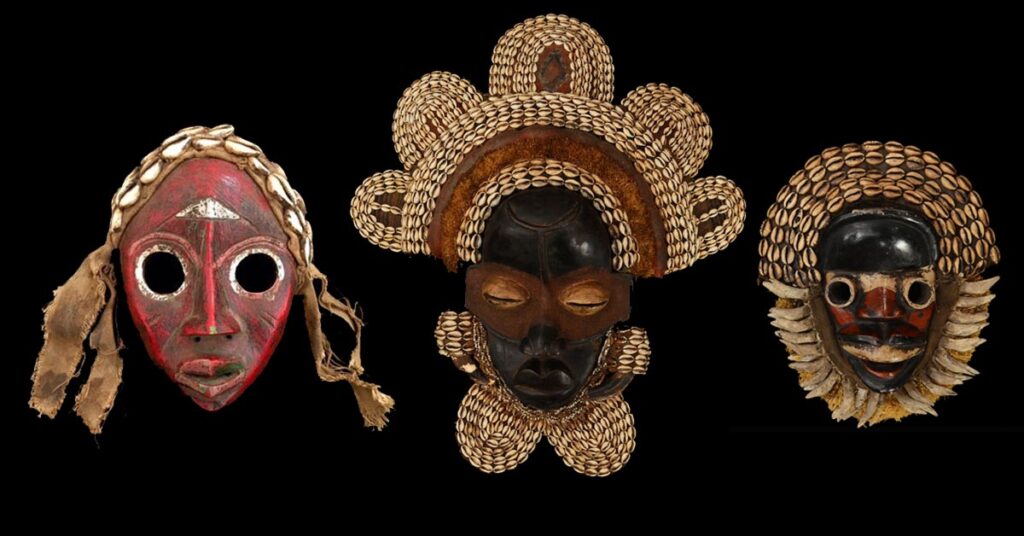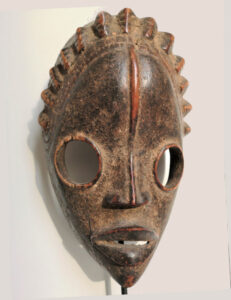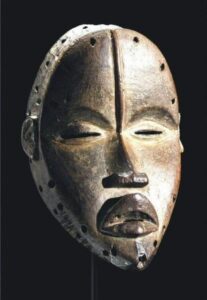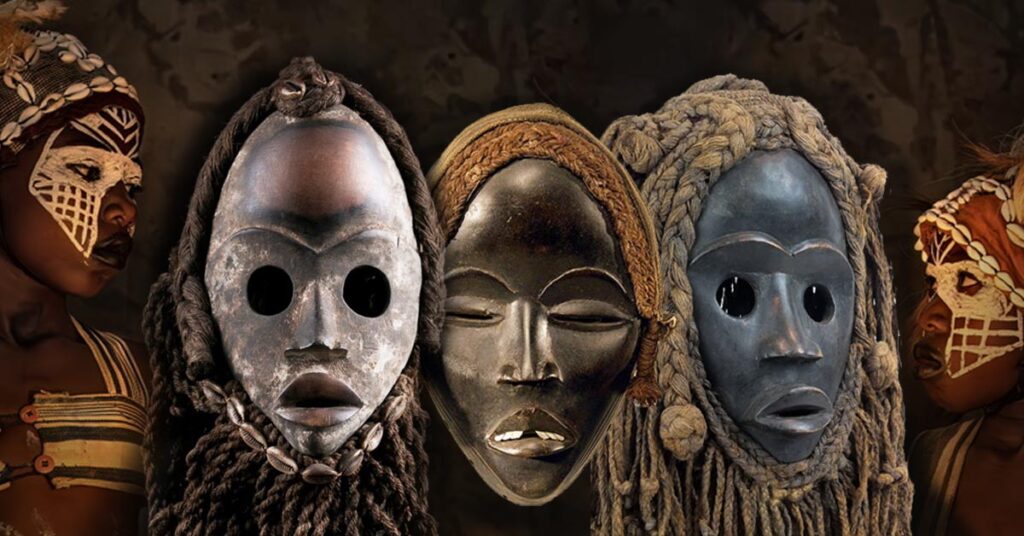Introduction
The Dan mask holds significant cultural and artistic value among the Dan people of Ivory coast and Liberia. Also known as Gle or Ge, these masks serve as a physical representation of the spirits that inhabit the forest and enter the civilized world through masquerade performances. In this article, we will explore the meaning, origins, and traditions surrounding the Dan mask, shedding light on its importance in Dan culture.

The Significance of the Dan Mask
The Dan people use the terms ge and gle interchangeably. They do this to refer to both the physical mask and the supernatural spirits they believe the masks embody. For the Dan people, masquerades are a way for the spirits to enter their world.
These spirits, known as Gle, can only be embodied during a masquerade. And only if an initiated member of a Dan men’s society has a dream revealing the nature of the Gle, its function, and the masquerade itself. The council of elders then decides whether to create the masquerade ensemble for the chosen individual to wear and perform.
The Characteristics of the Dan Mask
The Dan mask is typically made of wood. It’s accompanied by a full-body costume constructed of raffia, feathers, and fur. Each Gle is believed to have its own personality, preferences, dance, and speech patterns, and is given a personal name. During the masquerade, the wearer of the mask takes on these qualities. However, due to the unpredictable nature of the Gle, an attendant always accompanies the masquerader to control and interpret its speech.

Dean Gle and Bu Gle Masks
The Dan mask can be divided into two categories: dean gle and bu gle. Dean gle masks represent an idealized version of Dan beauty, characterized by narrow eyes, an oval shape, a smooth forehead, and a slightly open mouth. These masks have gentle and peaceful qualities and serve to teach, entertain, and nurture.
On the other hand, bu gle masks are designed to frighten. They have protruding tube-like eyes and boldly projecting angles on the surface of the face. Bu gle masks, named after the sound of a gunshot, embody masculine qualities and are associated with war.

Ma Go: Personal Miniature Masks
Dan personal miniature masks, known as ma go, are carved to embody tutelary spirits and primarily serve to protect their owner from harm. They may also be used in divination and as sacred objects for making oaths. These miniature masks are treated like other sacred objects, fed with ritual offerings, and kept hidden from public display. In some cases, owners of full-sized masks may carry a miniature version as a ma go.

Mask Classifications
Vandenhoute, a scholar, distinguished two main groups of Dan masks: gebande and genome. Gebande masks are considered the most sacred, while genome masks hold a lower rank. The classification of masks is based on the content attributed to them by the Dan, rather than their appearance.
Gebande masks can be further divided into subgroups and categories. The subgroups include singers’ masks, dancers’ masks, storytellers’ masks, and beggars’ masks (used for collecting offerings for ancestors). The categories consist of gore or ancestor masks (the most sacred), gesuya or avenger masks (which stand up to the Go master and the ancestors), miniature masks (substitutes for Goge or Gesuya masks), and sagbwe masks (used by runners or fire watchers).
The Performance of the Dan Mask
Music plays a crucial role in driving gle performances. It acts as the “fuel” that enables performers to tap into spiritual power, resolve conflicts, and heal. The spiritual powers manifest through the collaboration of Dan performers, the Ivorian judiciary, and combatting socially destructive spiritual behaviors.
Contemporary gle performances have incorporated elements of popular culture. Gle may reference technology, mention religious figures like Jesus or Allah, incorporate mass-mediated popular music, and even be performed in multiple languages. However, before a gle can perform, its performance must be approved by the authorities associated with the “sacred house” of that particular gle. The approval process involves consultation with a powerful spirit called the yinan, using kola nuts in a divination process.

Conclusion
The Dan mask holds deep cultural and spiritual significance among the Dan people of Liberia. Through masquerade performances, these masks serve as a gateway for supernatural spirits to enter the civilized world. Each mask represents a unique personality and embodies specific qualities during the performance. Whether it is the gentle dean gle or the fearsome bu gle, the Dan mask is a testament to the rich cultural heritage and artistic traditions of the Dan people.

































